Black-spot barb - Puntius filamentosus
Scientific name: Puntius filamentosus
Common name: Black-spot barb
Family: Cyprinidae
Usual size in fish tanks: 13 - 18 cm (5.12 - 7.09 inch)
014
Recommended pH range: 6 - 7
Recommended water hardness: 5 - 10°N (89.29 - 178.57ppm)
0°C 32°F30°C 86°F
Recommended temperature range: 20 - 24 °C (68 - 75.2°F)
The way how these fish reproduce: Spawning
Where the species comes from: South Asia
Temperament to its own species: peaceful
Temperament toward other fish species: peaceful
Usual place in the tank: Middle levels
Food and Feeding
Black-spot Barbs are easy to feed and make an ideal choice for both beginner and experienced aquarists. They will readily accept high-quality flakes as their staple diet. To keep them healthy and vibrant, offer a varied diet that includes occasional treats like bloodworms, brine shrimp, and daphnia. Incorporating these protein-rich foods into their diet not only enhances their coloration but also helps maintain their overall well-being. Additionally, they will nibble on algae and plant matter, so incorporating some vegetable-based flakes or blanched vegetables like zucchini can provide balanced nutrition.
Origin and Natural Habitat
Black-spot Barbs (Puntius filamentosus) are native to South Asia, specifically found in the river systems of the Kaveri River basin in South East India and Sri Lanka. In their natural habitat, they inhabit clear, slow-moving streams, rivers, and backwaters, often found in areas with dense vegetation and plenty of submerged roots and branches. The water in these regions is typically soft to moderately hard and slightly acidic to neutral. Understanding their origin and natural habitat can help aquarists replicate similar conditions in the aquarium, promoting the fish's health and natural behavior.
Tank Setup and Environment
To create a suitable environment for Black-spot Barbs, set up a tank of at least 80 liters (20 gallons) with plenty of swimming space. They thrive in a tank that mimics their natural habitat, so include dense planting with species like Java Fern, Anubias, and Vallisneria. Adding driftwood, smooth rocks, and a sandy substrate will provide hiding spots and a more natural setting. Maintain a water temperature between 20-24 °C (68-75.2°F) with a pH range of 6.0-7.0. Ensure good filtration to keep the water clean, and perform regular water changes to maintain high water quality.
Sexing
Sexing Black-spot Barbs can be relatively straightforward. Males typically exhibit a more elongated body shape and possess a larger dorsal fin that ends in a distinct spike. During the spawning season, males develop white spots around their mouths, a sign of their readiness to breed. Females, on the other hand, have a rounder and fuller body, particularly when they are carrying eggs. The females also tend to have slightly duller colors compared to the males.
Breeding
Breeding Black-spot Barbs can be a rewarding experience for aquarists. To encourage breeding, use a dimly lit breeding tank of around 40 liters (10 gallons) with soft, slightly acidic water and a temperature of 26°C (78°F). Provide fine-leaved plants or a spawning mop, as these fish scatter their eggs. Ensure a slow water current to mimic their natural breeding conditions. Spawning typically occurs at dawn, and the parents should be removed from the tank after spawning, as they may consume the eggs. The eggs will hatch within 24-48 hours, and the fry will become free-swimming in about 3-4 days. Start feeding the fry with Infusoria or liquid fry food, and as they grow, introduce newly hatched brine shrimp and crushed flakes.
Lifespan
With proper care, Black-spot Barbs (Puntius filamentosus) can live between 4 to 8 years. A well-maintained tank with a balanced diet, stable water conditions, and regular monitoring can help them reach the upper end of this lifespan. Their longevity makes them a long-term companion for aquarists, contributing to the dynamic ecosystem of the aquarium.
Short Description
Puntius filamentosus are a vibrant and active addition to community tanks. They are peaceful, schooling fish that thrive in a variety of tank environments and are compatible with a wide range of other species, including larger tank mates. Their energetic behavior and playful nature bring dynamic movement to the aquarium, making them a joy to watch.
For the best results, keep Black-spot Barbs in groups of at least 5-6 fish. This schooling behavior reduces stress and encourages natural social interactions. In smaller groups, they may become shy or stressed, affecting their health and behavior. When kept in a well-maintained and adequately sized tank with plenty of hiding spots, they exhibit their best colors and most active behavior.
Black-spot Barbs are hardy fish that adapt well to different water conditions. However, they do best in a well-maintained tank with good water quality, moderate lighting, and a gentle water flow. Adding hiding spots and plants creates a more natural environment and provides security for these active swimmers. They also benefit from a gentle flow of water, simulating their natural riverine habitats.
Pictures
Images provided by aqua-fish.net from jjphoto.dk.








 Bala
Bala  Spotted
Spotted  Golden
Golden  Tinfoil
Tinfoil  Congo
Congo  Blue-barred
Blue-barred  African
African  Butterfly
Butterfly  Olivegreen
Olivegreen  Morse
Morse  Jerdon’s
Jerdon’s  Mosquito
Mosquito  Dwarf
Dwarf 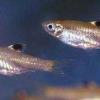 Eyespot
Eyespot  Goldfish
Goldfish  Penguin
Penguin  Siamese
Siamese  Koi
Koi  Pearl
Pearl  Glowlight
Glowlight  Crossbanded
Crossbanded 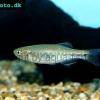 Yoma
Yoma  Orange
Orange 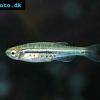 Dwarf
Dwarf  Zebra
Zebra  Rose
Rose  Red
Red  Arulius
Arulius  Tambraparni
Tambraparni  Fiveband
Fiveband  Bengal
Bengal 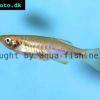 Tiger
Tiger  Malabar
Malabar  Queen
Queen  Hora
Hora  False
False  Redtail
Redtail  Rainbow
Rainbow  Flying
Flying  Garra
Garra  Black
Black 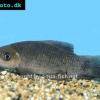 Purple
Purple  Burmese
Burmese  Dwarf
Dwarf  Isok
Isok  Rosy
Rosy 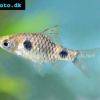 Two
Two 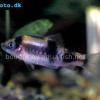 Melon
Melon  Golden
Golden  T-Barb
T-Barb  Ruby
Ruby  Checkered
Checkered  Rhomb
Rhomb  Gold
Gold  Tiger
Tiger  Cherry
Cherry  Brittan’s
Brittan’s 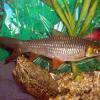 Greater
Greater  Long-band
Long-band  Twospot
Twospot  Reticulate
Reticulate  Cherry
Cherry  Denison
Denison  White
White  Lambchop
Lambchop  Harlequin
Harlequin